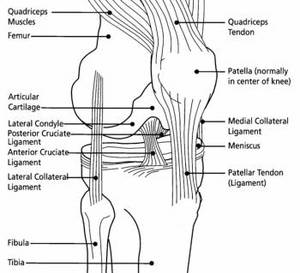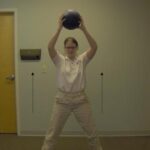If you have been experiencing pain in and around the knee area, you may have a meniscus tear. A meniscus tear is often the results of an injury caused by twisting or turning of the knee, and could have taken place last week or several years ago. Here we will examine meniscus tear symptoms and treatment options.
What is a meniscus?
There are two menisci located in the knee. They are each C-shaped cushions located between the bones of the knees, at the inner and outer edge of the knee, and together they work to balance weight and keep the knee steady. With two healthy menisci, they prevent bones from grinding together and keep the knee operating smoothly. But when a meniscus becomes torn, it can cause significant pain and prevent the knee from moving freely.
What causes a torn meniscus?
Anyone that lives an active lifestyle can experience a torn meniscus; it is one of the most common types of knee injuries. Meniscus tear symptoms are most commonly seen in athletes. A torn meniscus can be caused by forceful rotation, quick turning, extreme pressure, or by placing heavy weight on the knees. Individuals that are overweight are prone to meniscus tears, as are the elderly. As we age, the menisci tends to become worn down and is more easy torn and damaged.
Meniscus tear symptoms
Meniscus tear symptoms can range from mildly painful to extreme. Some of the meniscus tear symptoms to look for include:
– Swelling of the knee area
– Stiffness in the knee
– Sharp or stabbing pain upon squatting or kneeling
– Popping or clicking sound in the knee
– Difficulty standing or unsteady sensation upon standing
– Decreased range of motion
You may or not be experiencing all of the symptoms listed above. There are different degrees of meniscus tear injuries. Some injuries can be treated at home while others will need professional evaluation and treatment.
Meniscus tear treatment
If you feel your pain is management, you may be able to treat your knee injury at home. In some cases, you will find the following meniscus tear treatment options helpful:
– Keep the knee elevated and rested
– Apply ice packs to the knee to decrease swelling
– Keep weight off the knee
– Begin a regimen of anti-inflammatory medication (such as Aleve or other Naproxen medicines)
If you do not begin to feel relief after a few days, seek treatment from a medical professional. At your appointment, your doctor will very likely order an x-ray series to get a clearer picture of your injury. An MRI may then be necessary for an even clearer diagnosis of your knee injury.
In many cases, meniscus repair surgery is required to correct the knee injury. This is a very common procedure with a short recovery time. During surgery, your surgeon will sew up and repair the meniscus tear, or even remove the damaged portion itself. Most patients return home on the same day of their surgery and are required to wear a knee brace for up to two weeks. The good news is that if surgery is required, once you have recovered you will have no further episodes of knee pain and your meniscus tear will be repaired!
Please note – The author of this article is NOT a doctor, surgeon or medical professional. All of the information above is based on personal experience and should not be used to diagnosis or treat injury.
** To read more from this author, CLICK HERE.
SOURCE:
Personal knowledge and experience
Dr. Alcott / Onslow Orthopedics – Jacksonville, North Carolina




